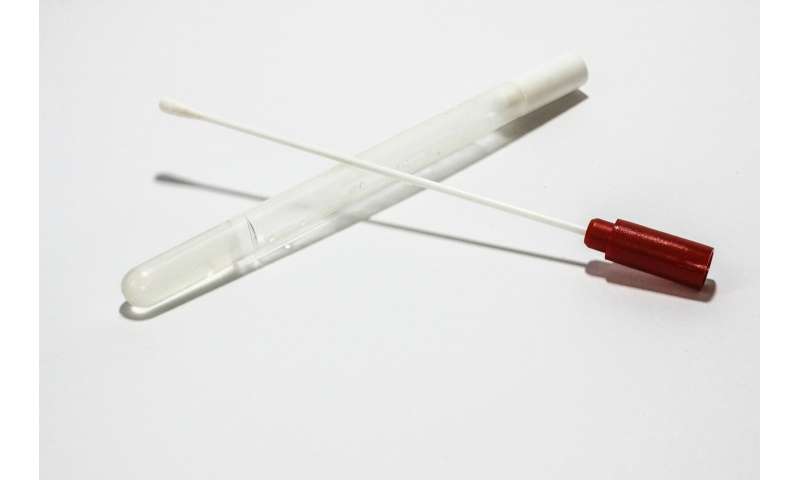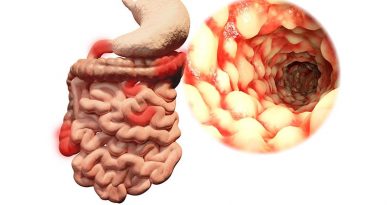As society looks for a ‘new normal,’ is antibody testing a way forward?

With the lockdown in Wuhan, China, lifted at the beginning of April and some European countries slowly reopening their economies, many nations are wondering what the immediate future might look like amidst the ongoing novel coronavirus pandemic.
One of the first key questions is determining how many people have already been infected. Recent antibody studies, including a survey in New York State, are being used to find previously undetected infections. These studies have reported wide ranges in the numbers of infections, with concerns from scientists that the methods these studies use aren’t providing sufficiently precise or accurate information.
Even as new studies are being analyzed and debated, some countries are already exploring ways to use antibody testing to get people back to work. Several, including Italy, the United Kingdom, and the United States, have discussed the idea of “immunity passports,” while Chile has already made plans to provide immunity certificates to its citizens who have recovered from COVID-19. Recently, the WHO cautioned against this approach since there is not yet any evidence that people who have recovered from the novel coronavirus are immune from a second infection.
Amidst ongoing scientific studies and discussions around different ways to reopen countries, Penn experts discuss limitations of commercial antibody tests, how scientists are assessing the true scale of COVID-19 infections, and what studies are being done to see who might now be immune to the novel coronavirus.
There are two types of tests for SARS-CoV-2
The tests that are currently being done at drive-through sites across the country can determine if a person is actively infected with the virus. A sample is collected from a person’s upper airways, using a nasopharyngeal swab that reaches to the back of the nose and throat, and viral RNA is converted to DNA and then amplified using a laboratory technique called polymerase chain reaction. More than 5 million of these types of tests have been conducted in the U.S., but these tests have so far been limited to more symptomatic or severe cases.
Now, to learn more about the true scale of COVID-19 infections, researchers are using antibody-based tests to figure out who’s recovered from a previously undetected infection. Antibodies are specific to unique regions on a virus or bacteria and are produced by the immune system in response to a new infection. Antibodies typically don’t appear until several days after an infection has cleared.
Different types of antibody tests have varying degrees of accuracy
At Penn, immunologist Scott Hensley is leading a study to evaluate the presence of SARS-CoV-2 antibodies in health care workers. This will help researchers better understand how the disease spreads and how many individuals might have been exposed to the virus without experiencing symptoms. “These tests can be very important in trying to assess how much the virus has circulated in our community because right now we only really know about the people that are severely ill,” he says.
Hensley’s lab uses a technique called enzyme-linked immunosorbent assay, or ELISA, to quantify the number of antibodies present. This is a slower but more precise method than the commercially-available rapid tests, many of which have been flagged with significant concerns regarding their accuracy. “A lot of the tests that you are reading about in the news are point-of-care tests that give results within 15 minutes, almost analogous to a pregnancy test,” says Hensley. “The tests we run in our lab are more quantitative and accurate, but developing those kinds of tests on a large-scale basis is tricky.”
One of the issues with interpreting the results of commercial tests is that the number of people exposed to the virus is thought to be very low, around 2-3% of the global population. Even if a rapid test gives correct results 99% of the time, having 1% of false results is enough to make it difficult to decipher which results are true and which are not. “In the position that we’re in right now, where there is very low seroprevalence, you really have to have precise measurements. Tests that have a high rate of false positives become uninterpretable when you are only expecting a few percent of people to be positive,” says Hensley.
“Not all antibodies are created equally’
Antibody tests can indicate if a person has antibodies that recognize the novel coronavirus, which means that they were previously infected. But, Hensley says, “They do not tell us how well those antibodies block virus infection.” Even if a person has a high number of antibodies, he says, it doesn’t mean that they are automatically protected from having a second SARS-CoV-2 infection.
To confirm that antibodies lead to immunity, scientists will need to see if the presence of antibodies makes people less likely to get infected compared to people without antibodies. “Our health care worker study might be able to address some of these questions,” says Hensley. “Within our health care workers, some have antibodies and some don’t, so we can track them over time to see if those that have antibodies are less likely to become infected.”
Antibody tests are useful for studying populations, but using that information to make individual decisions is challenging
Data from antibody tests can help improve the models that are used to determine when social distancing measures can be reduced. But because of the issues with test accuracy and because not knowing if antibodies lead to immunity, using this information to issue immunity certificates is risky.
“These types of results are better applied to make decisions about a population, such as when to resume NBA games, and not about an individual, like who specifically is able to attend those games,” says Hensley. “First, most of the commercial tests are not accurate, so you can’t trust the data. Second, even if you could trust the data, it’s not clear what level of antibodies you need for protection. Third, it’s really hard to figure out how we would ever enforce rules based on an individual’s immunity.”
In addition to technical concerns about test reliability and a lack of understanding about immunity, PIK Professor Jonathan Moreno, a bioethicist, says that immunity certificates could provide a perverse incentive for people to get infected with the coronavirus, akin to the measles and rubella parties of past years. Immunity certificates issued using the results of antibody tests could also favor higher-ranking people over less well-off individuals who can’t get access to testing. In addition, anything that limits freedom of movement or interstate travel would likely be challenged in court under the Privileges and Immunities Clause of the Constitution.
“You’ve got perverse incentive, along with people who are in important positions who get cards, and that would lead to a huge black market. They would be so valuable that counterfeit versions would pop up all over the place,” says Moreno. “I’m not holding my breath that this would be done.”
A more equitable approach, he says, could be a color-coded tracking system, similar to what China is using, that provides an algorithmically-determined health status which is verified before people can visit shops or restaurants. This approach could also provide positive incentives instead of perverse ones, such as avoiding large crowds or encouraging someone to remain at home after visiting a hot spot but is also more “politically hazardous” in terms of privacy and data protection.
More basic research will be crucial to answering key questions
Research currently happening at Penn will be instrumental in answering some basic questions about a virus that has only been known for a few months. This includes research from the labs of Sara Cherry, Katharine Bar, and Paul Bates, who are using cell cultures and high-throughput assays to figure out how well different antibodies neutralize SARS-CoV-2.
Source: Read Full Article



